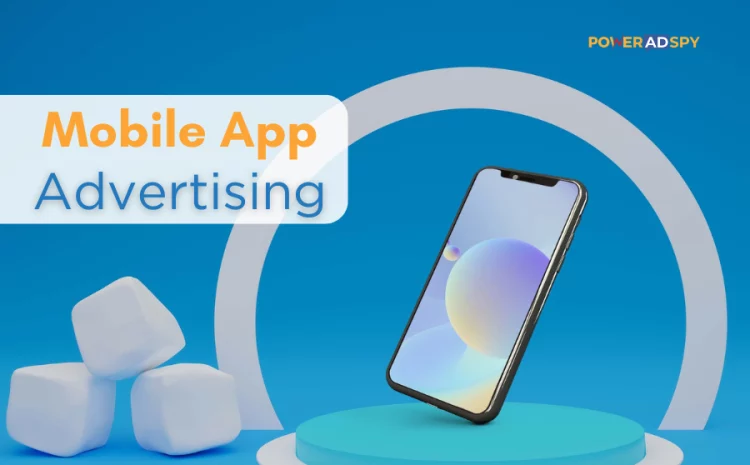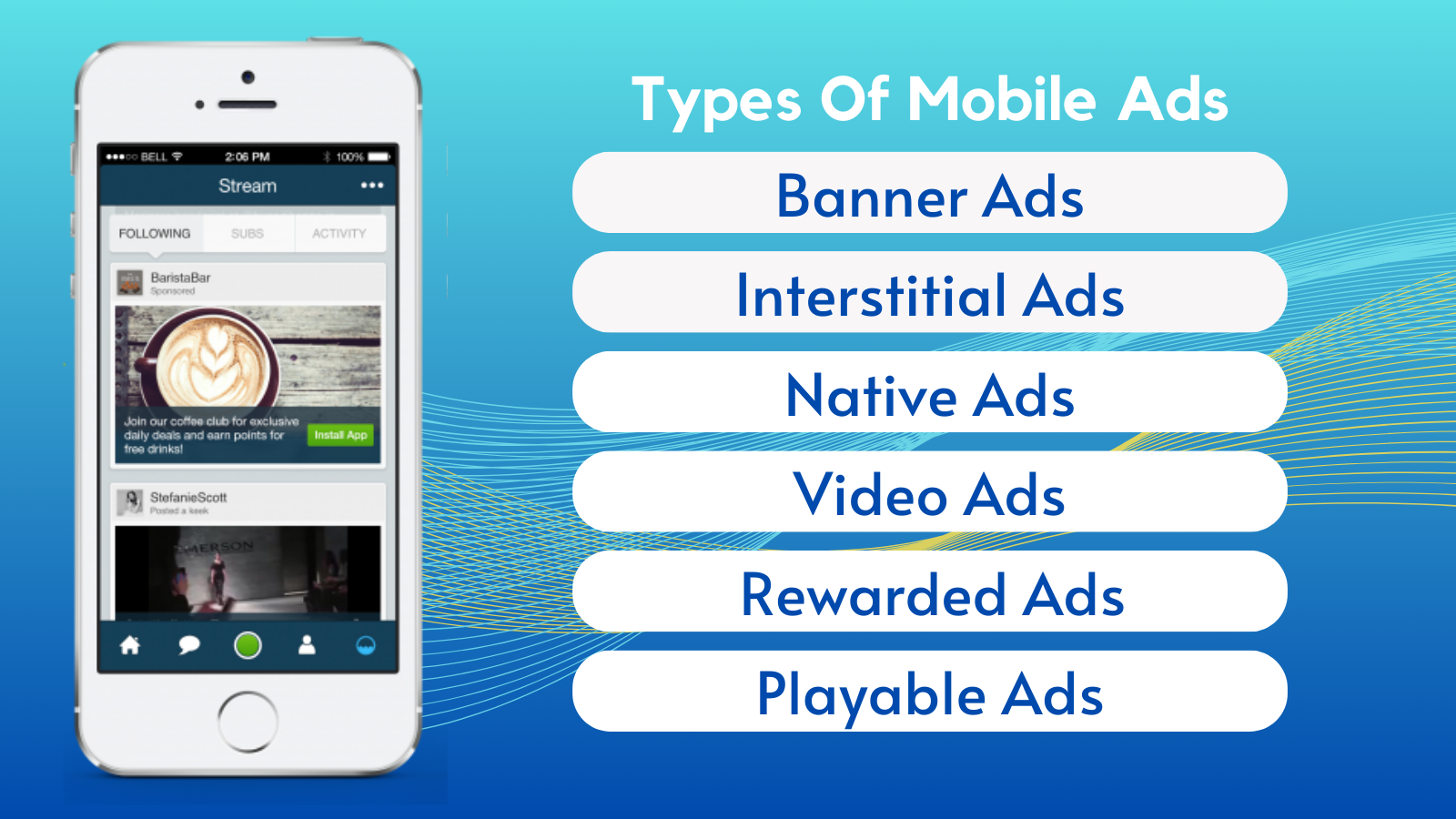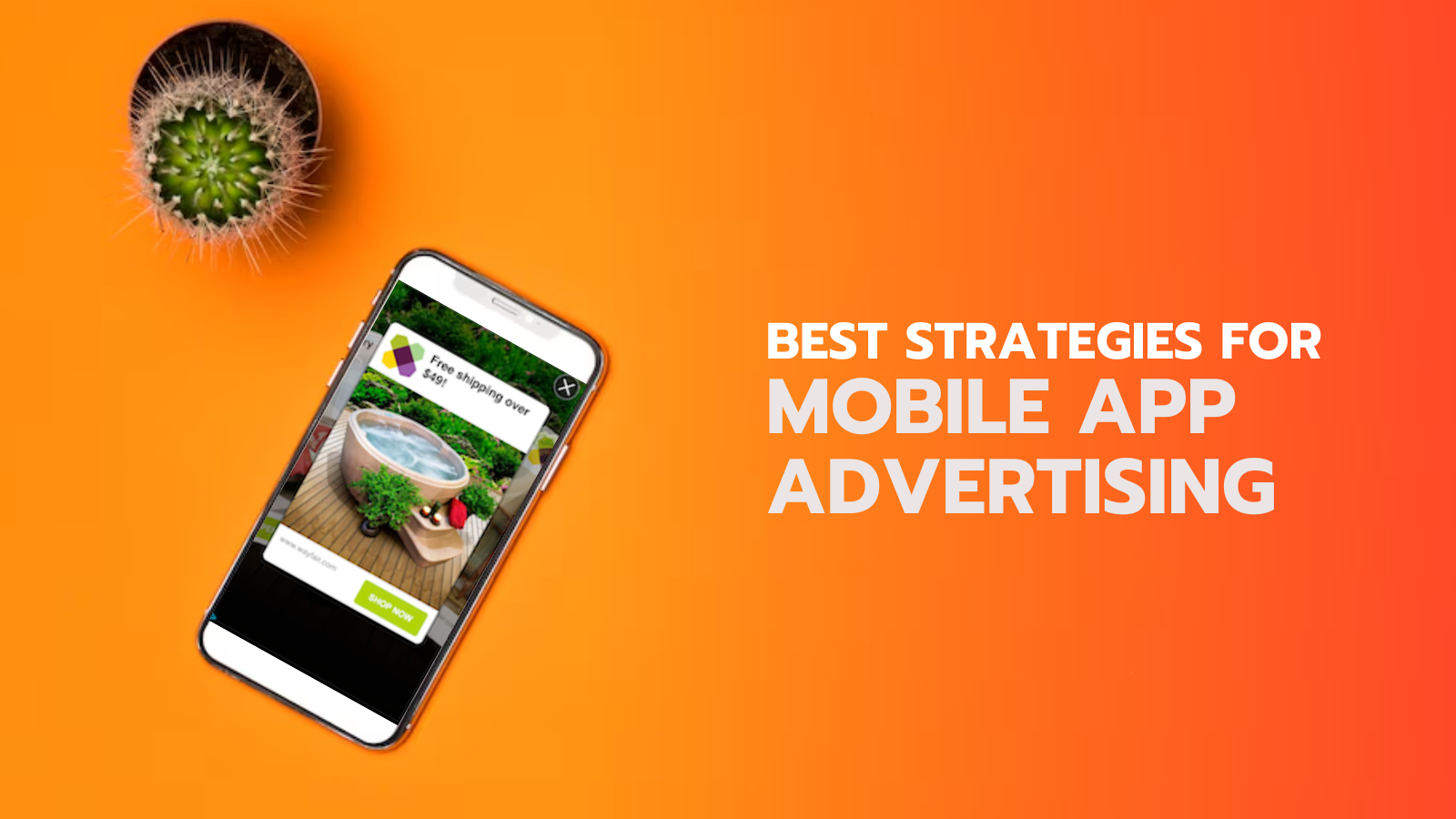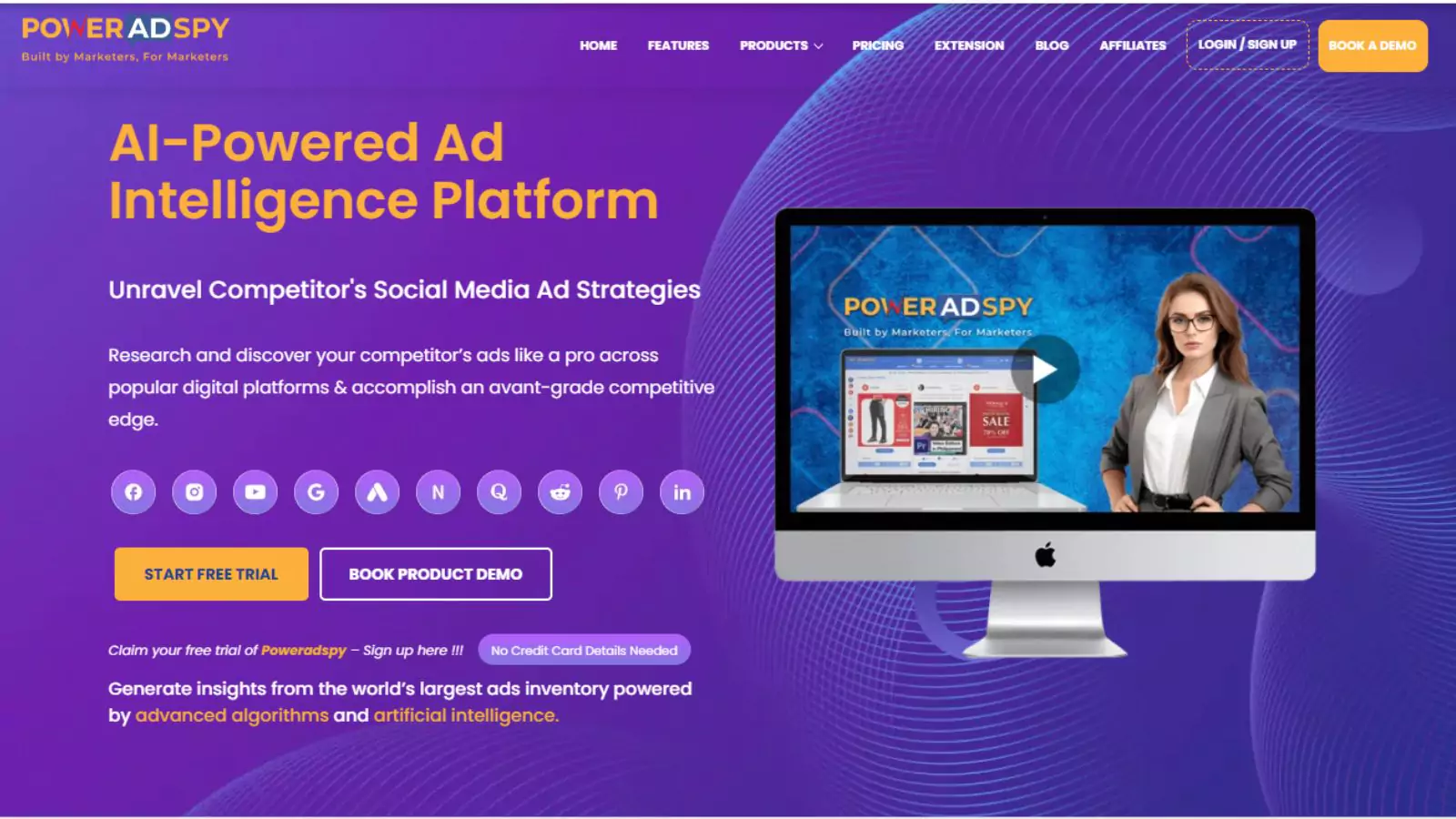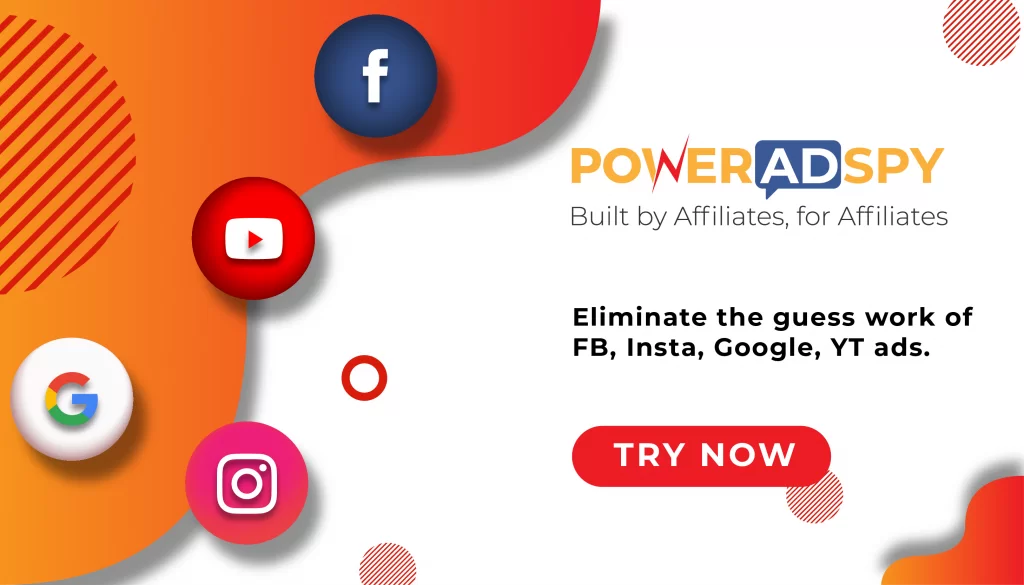Mobile App Advertising: Everything You Need To Know
As mobile platforms are becoming the primary hub for entertainment, gaming, and much more, mobile app advertising reshapes how brands connect with their audiences.
This guide isn’t just an introduction; it’s your personalized gateway to unlocking the full potential of mobile app advertising. Together, we’ll delve beyond the surface and explore the foundational elements, benefits, and challenges of mobile phone app advertising.
Additionally, we’ll equip you with strategies honed for success in this evolving terrain. From dissecting the unique characteristics of mobile platforms to unraveling the diverse array of ad formats optimized for maximum impact, we’re here to equip you with the knowledge and tools necessary to navigate this evolving terrain.
Whether you’re a seasoned marketer looking to refine your strategies or a newcomer eager to make your mark, this guide promises to be your trusted companion. Join us as we embark on a journey of exploration and discovery, navigating the frontier of mobile app advertising together.
Hit ‘Play’ Button & Tune Into The Blog!
What Is Mobile App Advertising?
Mobile app advertising strategically places ads within mobile applications to promote products, services, or other apps to users. It utilizes various ad formats and targeting techniques to reach specific audiences and drive desired actions like app downloads, interactions, or purchases.
Advertisers can utilize mobile app advertising to achieve various marketing objectives, including increasing brand awareness, driving app installs, boosting user engagement, and ultimately generating revenue. Various mobile advertising platforms are available, each offering unique features and targeting capabilities.
For example, a gaming app might display interstitial ads between levels, encouraging users to download a featured app for in-game rewards. Similarly, a social media app might incorporate native ads that blend with users’ feeds, promoting relevant products or services.
Enhance your mobile app advertising strategy with insights from PowerAdSpy. Start exploring now!
What Are The Types Of Mobile App Ads?
Mobile app advertising offers a variety of ad formats tailored to capture users’ attention and drive engagement. Let’s explore some of the most common types of mobile app ads:
Banner Ads
Banner ads are rectangular advertisements at the top or bottom of a mobile app’s interface, containing text, images, or animations to attract users’ attention without interrupting their app experience.
Interstitial Ads
Interstitial ads are full-screen advertisements that appear at natural transition points within a mobile app, providing ample space for creativity and effectively capturing users’ attention with compelling messages or promotions.
Native Ads
Native ads for mobiles seamlessly blend into the app’s content, offering a non-disruptive advertising experience that matches the app’s interface, making them more engaging and less intrusive than traditional display ads. They are well-integrated into the app’s layout and can be customized to match its design aesthetic.
Video Ads
Video ads are short clips that play within the app’s interface. They offer a visually compelling way to showcase products or services. Video ads can appear as pre-roll ads before the app’s content, rewards ads where users watch videos in exchange for in-app rewards, or interstitial ads between app content.
Rewarded Ads
Rewarded ads offer users incentives like in-app currency or premium content in exchange for engaging with the advertisement, providing a positive user experience and driving engagement by encouraging users to interact with the ads.
Playable Ads
Playable ads let users interact with a mini-game or demo of the advertised app within the ad unit, providing a hands-on experience of its features and gameplay to help them decide whether to download it.
Combining various mobile app ad formats empowers advertisers to create impactful campaigns tailored to their target audience, driving meaningful outcomes. Each format offers unique benefits adaptable to campaign goals and demographics, highlighting the importance of selecting the right combination.
What Are The Pros And Cons Of Mobile App Advertising?
Mobile app advertising offers many benefits for advertisers and app developers, but it also comes with its challenges. Let us explore the pros and cons of mobile app advertising:
Pros:
- Audience and Exposure: Mobile app advertising provides access to a vast audience, ensuring brand visibility and engagement with billions of users globally.
- Growing Market Segment: With the mobile app market expanding rapidly, advertisers can tap into this growing segment and leverage the popularity of mobile devices.
- Increasingly Effective: Advancements in mobile advertising technology have made ads more targeted and engaging, leading to higher conversion rates and ROI.
- Personalized Targeting: Advertisers can utilize sophisticated targeting options to deliver personalized content that resonates with specific audience segments.
Cons:
- Trust Issues: Privacy concerns and data breaches have led to growing mistrust among users, emphasizing the need for transparency and user consent.
- Low Quality and Pervasive: The abundance of low-quality and intrusive ads diminishes the user experience, requiring advertisers to focus on creating high-quality, non-disruptive ads.
- Ad Fatigue: Constant exposure to ads within mobile apps can lead to user fatigue, necessitating a balance between ad delivery and user preferences to prevent disengagement.
- Accidental Clicks: Accidental clicks on mobile ads can result in wasted ad spend and negative user experiences, highlighting the importance of clear ad placement and exit options.
Best Strategies To Follow For Mobile App Advertising
Running a successful mobile app advertising campaign requires a thoughtful approach and strategic implementation. Here are key strategies to optimize your campaigns:
Target Audience Analysis
Conduct thorough research to understand your target audience’s demographics, interests, and behaviors. Use this insight to create tailored ad campaigns that resonate with your audience and drive engagement.
There are various ad analytics tools present in the market that can help you to perform competitor analysis. One such ad spy tool is PowerAdSpy, which can help you extract information like the type of audience, demographics, and the types of ads your competitors are targeting.
Utilize Poweradspy For Target Audience Analysis
PowerAdSpy is a powerful Google Ad Spy tool that can significantly enhance your target audience analysis. By leveraging PowerAdSpy’s features, you can gain valuable insights into your competitors’ ad strategies, audience targeting tactics, and creative approaches. Here’s how PowerAdSpy can help:
Competitor Analysis: PowerAdSpy allows you to spy on your competitors’ ad campaigns, providing insights into the demographics they are targeting, the ad creatives they are using, and the platforms their ads are running. Analyzing your competitors’ strategies can help you identify potential audience segments to target.
Ad Creative Inspiration: PowerAdSpy provides an extensive database of over 500 million advertisements from over 100 countries and diverse industries. Users can explore this wealth of ads for inspiration, bookmarking those they find particularly helpful, inspirational, or effective.
Advanced Search Capabilities: Leverage PowerAdSpy’s AI-enhanced filters to conduct advanced searches for ads. These filters enable users to find ads based on specific keywords, phrases, and terms used in the ads. Furthermore, users can narrow their search results by utilizing filters based on ad positions, call-to-action, and niche/products. It enhances the efficiency of ad research by allowing users to pinpoint ads that align closely with their campaign objectives.
Ad Performance Metrics: Utilize PowerAdSpy to track ad performance metrics, including engagement rates, estimated reach, impressions, and popularity metrics. Analyze social engagement data to pinpoint top-performing creatives and optimize campaigns for superior results and impactful audience engagement.
Using PowerAdSpy for target audience analysis provides valuable insights into competitors’ strategies, optimizing ad campaigns for maximum effectiveness. Apply these insights to refine audience targeting, crafting tailored ad campaigns that resonate and drive engagement with your target audience.
Use Ad Formats Strategically
Choose ad formats that align with your campaign goals and audience preferences. Experiment with various formats, such as video, interactive, and native ads, to determine which drives the best results.
Conduct Continuous Testing
Continuously test different elements of your ad campaigns, including ad copy, visuals, targeting criteria, and landing pages. Analyze performance data and iterate on your strategies to optimize campaign performance and maximize ROI.
Adhere To Privacy Guidelines
Adhere to privacy guidelines and regulations to build trust with users and maintain compliance with industry standards. Obtain explicit consent for data collection and use transparently to protect user privacy.
Avoid Over-Advertising
Avoid bombarding users with excessive ads that can lead to ad fatigue and negative user experiences. Strike a balance between ad frequency and user engagement to ensure a positive app experience for your audience.
Budget Management And Bid Optimization
Set budget limits for your campaigns and monitor spending closely to avoid overspending. Use bid optimization strategies, such as adjusting bids based on performance metrics and competition, to maximize the efficiency of your ad spend.
By implementing these strategies, you can create effective mobile app advertising campaigns that drive engagement and conversions. Stay agile, adapt to changes in the advertising landscape, and continuously optimize your campaigns to achieve your business objectives effectively.
Read More
07 Ultimate Strategies For Mobile Advertising Campaigns This Diwali Season
How To Leverage Native Advertising For Maximum Reach
Top 03 Mobile Advertising Platforms Used by the Digital Marketers
In App Advertising: Your Complete Guide To In App Ads
Various Mobile App Promotion Options
When it comes to promoting mobile applications, advertisers have a wide range of options at their disposal. Google Ads offers Google App campaigns, enabling application developers to promote their apps across various Google properties, including Google Search, Google Play, YouTube, and the Google Display Network. Similarly, Apple Search Ads, provided by Apple, promote iOS apps within the App Store search results, targeting users actively seeking relevant apps.
Platforms like Meta (Facebook), X (Twitter), and others also offer App Install Ads. These represent just a few of the platforms that provide app campaigns. However, many other ad networks and platforms have comparable services, underscoring the importance of exploring all options for optimal reach.
Final Thoughts
Understanding your audience is essential in mobile app advertising. Analyzing demographics, interests, and behaviors can help advertisers to tailor successful campaigns. Ad spy tools like PowerAdSpy offer insights into competitors’ strategies, aiding decision-making.
However, success requires more than data; it demands creativity and adaptability. Prioritize user experience, adhere to privacy guidelines, and avoid ad fatigue for sustained engagement. Embrace experimentation and optimization to stay competitive. Let innovation and strategy guide you in creating impactful campaigns that leave a lasting impression and drive results.

